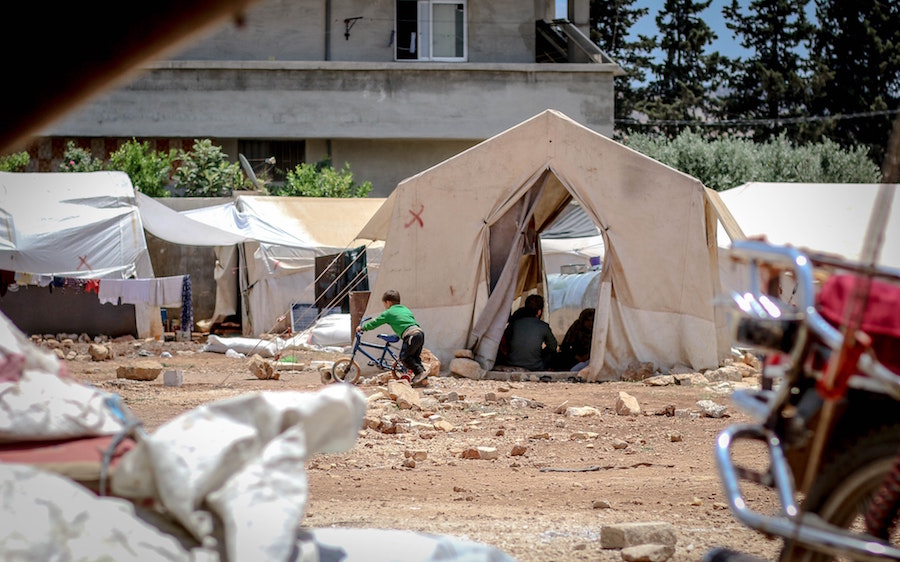Canada Moving Towards Fully Online Immigration System
Immigration Minister Reveals Commitment to Developing Virtual Immigration Processes
After successfully launching the world's first online citizenship test in 2020, Canada will continue developing virtual immigration processes, with the goal of eventually creating a fully online immigration system. Immigration Minister Marco Mendicino elaborated on this goal in a recent interview on the TVO news program, The Agenda.
Mendicino told host Steve Paikin that while Canada is already a world leader when it comes to online immigration processes, he would like to see this trend continue.
He cites the online citizenship test and ceremony launched in response to the COVID-19 pandemic as just one of the ways in which Canada has recently modernized its immigration system, and that will influence future developments.
“In a world that is increasingly going virtual, we are leading the way, especially when it comes to our immigration system,” said Mendicino. “We are the only ones that have moved our citizenship ceremony online, to my knowledge, and now we are also moving into the digital space when it comes to testing applicants.”
Canada has also offered online services through the Express Entry System to help newcomers settle into their communities and gain access to services and support before they arrive in Canada.
Going forward, Mendicino would eventually like to see a 100% online immigration system.
“My vision for our immigration system going forward is that it is completely virtual and touchless and that each and every one of these steps is integrated so that we become the envy of the world,” he said.
The federal government is aiming to welcome more than 1.2 million newcomers between 2021 and 2023, and an online immigration system could be extremely attractive to newcomers.
To help reach its targets, the federal government is also looking for ways to make it easier for foreigners already living in Canada – such as temporary foreign workers and international students – to remain in the country and secure permanent resident status.
“We’ve got a unique opportunity to take a look at the domestic immigration population that is already within our borders […] temporary workers who work in the healthcare sector (or) who work in the building trades,” said Mendicino.
Mendicino went on to describe international students studying in Canada as “among the best and brightest who are in the early stages of their lives and have chosen Canada to come and take part in an education.” He added that “they are very much looking forward to staying and contributing.”
Temporary Residents Affected by Pandemic Can Now Apply for Status Extension
Temporary Residents With Expired Status Can Also Apply for Restoration
Temporary residents that cannot leave Canada due to the COVID-19 pandemic can now extend their permanent resident status, according to CIC News. The extension will apply to temporary residents whose status will expire before they are physically able to leave the country.
Those seeking an extension must submit an application online and provide a valid reason for staying in Canada to Immigration, Refugees and Citizenship Canada (IRCC).
Applicants must also meet all of the requirements for an extension, including paying biometrics fees. There will be no additional fee waivers for extension applications, with the exception of certain waivers that are implemented under a public policy.
Once an extension application is submitted, the applicant will receive maintained status, and can remain in Canada until a decision has been made on their application. This means that the applicant cannot be forced to leave Canada, even if there is a delay in processing their application. However, IRCC is still recommending that those seeking an extension apply far in advance of the date on which their temporary resident status expires.
When evaluating an extension application, immigration officers will look at factors such as whether international air travel is closed, or if flights to the applicant’s country of origin are available.
For those whose status has already expired, there is the option of applying for restoration of their status. Temporary residents with expired status can apply for restoration within 90 days after the date it expired but must meet the eligibility requirements and pay any applicable processing and restoration fees.
The eligibility requirements for restoration are as follows:
- The applicant must have resided in Canada with valid temporary status between January 30, 2020 and May 31, 2021,
- Their temporary resident status must have expired between January 30, 2020 and May 31, 2021, and
- They must not have left Canada for any reason since they first arrived.
If an applicant meets all of the above requirements, they will be issued either a visitor record or the appropriate permit which outlines the conditions for their restoration status. This document will be mailed to the applicant.
If the applicant does not meet the restoration requirements and is deemed ineligible, the Minister’s delegate will decide on a disposition for the case. This could result in one of three outcomes:
- The delegate will refer the case to an admissibility hearing,
- A departure order will be issued, or
- The applicant will be able to stay in Canada.
Federal Government Launches Program to Help Hong Kong Residents Stay in Canada
New Program Designed to Give Students From Hong Kong a Safe Haven Amid Harsh New Security Laws
The Canadian Federal government will soon be launching several new programs to help Hong Kong citizens living in Canada remain in the country. The programs are being launched in response to global criticism of controversial new "draconian" Chinese security laws being enforced in Hong Kong.
The first program will be open for applications on February 8 and will provide former international students from Hong Kong the ability to obtain a work permit that lasts up to three years. This will enable them to work towards securing permanent residence in Canada.
“With flexible open work permits and a fast-track to permanent residency, skilled Hong Kong residents will have a unique opportunity to develop their careers and help accelerate Canada’s economic recovery,” said Immigration Minister Marco Mendicino in a recent statement.
Hong Kong residents who have earned a post-secondary diploma or degree from a Canadian institution within the last five years or hold an equivalent foreign credential are eligible for this program.
Two other programs will also be available to Hong Kong citizens. One will be open to Hong Kong citizens that have lived and obtained at least one year of work experience in Canada. The other will be open to recent post-secondary graduates coming to Canada directly from Hong Kong. The details of these two programs are still being worked on and will be launched at a later date.
Why These Programs Are Being Put in Place
The Chinese government has recently implemented new security laws and measures in Hong Kong that are being widely criticized. Specifically, the Chinese government criminalized the following acts:
- Secession – breaking away from the country,
- Subversion – undermining the power or authority of the central government,
- Terrorism – using violence or intimidation against people, and
- Collusion with foreign or external forces.
Critics of the new security laws believe they diminish Hong Kong's autonomy and strip citizens of human rights.
Meanwhile, the Canadian Federal government has been pressured to offer assistance to Hong Kong citizens that are affected by these new laws.
However, there are concerns that China will not recognize dual nationality, despite the fact that nearly 300,000 Hong Kong citizens currently have Canadian permanent resident status.
In fact, according to Global News, there have been reports in recent weeks of Hong Kong citizens who hold both Chinese and Canadian passports being detained and forced to denounce either their Chinese or Canadian citizenship.
This has led to increased concerns that China will begin cracking down harder on dual nationality and cut Canadians off from consular access.
IRCC Reveals Top 10 Jobs for New Immigrants
Data Shows IT and Restaurant Jobs Were in High Demand Throughout Pandemic
Despite the significant toll that the COVID-19 pandemic has taken on Canada's economy and job market, certain jobs remained in high demand in 2020, particularly for new immigrants. This is according to data from Immigration, Refugees and Citizenship Canada (‘IRCC’).
IRCC recently revealed a list of the top ten jobs available to new immigrants in Canada throughout the pandemic. The list is as follows:
- Software engineers and designers
- Food service supervisors
- Information systems analysts and consultants
- Computer programmers and interactive media developers
- Administrative assistants (excluding legal or medical administrative assistants)
- Financial auditors and accountants
- Cooks
- Restaurant and food service managers
- Advertising, marketing, and public relations professionals
- University professors and lecturers
This list demonstrates that newcomers with experience working in information technology have an advantage when it comes to obtaining permanent residence.
According to Immigration.ca, IT jobs such as software engineers and designers, information systems analysts and consultants, and computer programmers and interactive media developers were among the top jobs for immigrants in 2019, as well.
This is interesting to see because many businesses were forced to shut down during COVID-19 lockdowns in 2020, except for essential services, such as food production and manufacturing, retail sales, and healthcare. Therefore, it would be expected that jobs deemed "essential" would continue to be in high demand during the pandemic, while restaurant, education, and office jobs would have lower demand.
Wage Gap is also Narrowing
Despite the fact that immigrants are in high demand to fill labour shortages, recent data from Statistics Canada shows that newcomers still earn lower incomes than other Canadians. However, the wage gap between new immigrants and Canadian citizens has become much narrower over the last several years.
According to the Statistics Canada data, the median entry wage for new immigrants in 2018 was $30,100. This is higher than the median income for new immigrants in 2017, which was $26,500.
However, for all other Canadians, the median wage was $37,400 in 2018, which was 24.2 per cent higher than the median wage for immigrants that year.
This wage gap is determined by socioeconomic factors such as high language proficiency in English or French, and work experience, among other factors.
The Impact Of COVID-19 On Vulnerable Communities Including Refugees
How The Pandemic Has Led to Severe Repercussions For Refugees
The COVID-19 pandemic has not only jolted the economic progress of nations around the world in general, but it is leaving behind a trail of wider ramifications and repercussions on the lives of vulnerable communities, specifically, refugees. Such repercussions can be grouped under following headings:
High Risk of Infections
Refugee populations are at a higher risk of getting infected by the COVID-19 virus because of their overcrowded living conditions,[1] which make it difficult to maintain the social distance.[2] In addition, most refugee camps lack basic amenities like clean water and hygienic conditions.[3] Where the pandemic has limited the access to healthcare systems in general, refugee populations lack such facilities at the first instance.[4] In addition, the refugee camps lack the basic medical supplies and equipment to test and treat infections.[5]
Increase in Social and Economic Inequalities
Since the governments all over the world are focused on protecting and reviving their economies that have been hit hard by the pandemic, they have cut down the humanitarian funding on refugee populations. This has directly affected the social and economic progress of refugees by decreasing the quantity and quality of the basic amenities like food and clothing, and by increasing the unemployment in refugee populations.[6] In addition, many governments, like that of Lebanon, have not hesitated to establish discriminatory restrictions against refugee populations, which are otherwise inapplicable to their resident populations.[7]
It is also to be noted that refugee populations lack in appropriate tools like technology, internet, and smart phones, which makes it difficult for them to receive and disseminate information.[8] Such poor access to information leads to a lack of awareness about the pandemic in such populations, limiting the timely control and spread of infections.
Many undocumented immigrants may not report infections or come forth for immunization in fear of reprisals or deportation. Furthermore, absence of health insurance, caused by financial difficulties, may lead to adverse consequences when it comes to immunization of vulnerable communities.[9]
Even in countries like Canada, which were striving to receive as many refugees as possible, the progress of settlement seems stagnant. Life for those who were accepted, to enter the country, has been affected by domestic closures of business and schools.[10]
Impact on Relief Efforts and Resettlement
The pandemic has halted the resettlement of refugees and asylum seekers. A report indicates that about 168 countries have closed their borders to refugees, and about 90 of them have directed asylum seekers to go back to their countries.[11]
Halted the Immigration Process
COVID-19 has pushed immigration concerns further down the list of priorities for governments around the world. With changing travel restrictions in place, refugees have been hit harder. They are leading a stranded life, with no recourse in sight, be it in the country from where they are running or the country where they aspire to settle. Many refugees who have been detained with the purpose of deportation now face indeterminate, unlawful, and unnecessary detention[12] until the conditions on travel are lifted, which may take another year or so. In many Gulf countries, such detainees are kept in unhygienic and overcrowded centres with no access to clean water or healthcare facilities.[13]
Where the immigration processes have slowed down in general, countries like Greece have stopped processing applications for asylum seekers,[14] and left them in lurch.
There are scenarios where even programs meant for the benefits of refugee populations are turning into bane for them. For instance, Greek authorities have a “protective custody regime” program for refugee children, which aims at protecting the unaccompanied children. However, the detention centres have been found to be unhygienic and overcrowded, making them all the more vulnerable to infections like COVID-19.[15]
References
[1] Lee, Sung & Wehrli, Zach, COVID-19 Brief: Impact on Refugees, US Global Leadership Coalition, 2020-12-08 online: https://www.usglc.org/coronavirus/refugees/#:~:text=While%20refugees%20have%20so%20far%20escaped%20high%20rates,shortages%20and%20limited%20employment%20opportunities%20for%20displaced%20people
[2] Human Rights Watch, Greece: Island Camps Not Prepared for Covid-19 2020-04-22 online: https://www.hrw.org/news/2020/04/22/greece-island-camps-not-prepared-covid-19 accessed on 2021-01-26
[3] Mercy Corps, What effect is COVID-19 having on the Syria Crisis? online: https://www.mercycorps.org/blog/quick-facts-syria-crisis#covid-19-effect accessed on 2021-01-27
[4] Supra 1
[5] Human Rights Watch, “Syria: Aid Restrictions Hinder Covid-19 Response” 2020-04-08 online: https://www.hrw.org/news/2020/04/28/syria-aid-restrictions-hinder-covid-19-response accessed on 2021-01-26
[6] Supra 1
[7] Human Rights Watch, Lebanon: Refugees at Risk in COVID-19 Response 2020-04-02 online: https://www.hrw.org/news/2020/04/02/lebanon-refugees-risk-covid-19-response accessed on 2021-01-27
[8] Amnesty International, Bangladesh: COVID-19 Response flaws put older Rohingya refugees in Imminent Danger 2020-04-06 online: https://www.amnesty.org/en/latest/news/2020/04/bangladesh-covid-19-response-flaws-put-older-rohingya-refugees-in-imminent-danger/ accessed on 2021-01-27
[9] Human Rights Watch, Human Rights Dimensions of COVID-19, 2020-03-19 online: https://www.hrw.org/news/2020/03/19/human-rights-dimensions-covid-19-response accessed on 2021-01-26
[10] Levitz, Stephanie, Uncertain future looms for refugees seeking a Pandemic Era Fresh Start in Canada, CTV News 2020-12-12 online: https://www.ctvnews.ca/canada/uncertain-future-looms-for-refugees-seeking-a-pandemic-era-fresh-start-in-canada-1.5228645 accessed on 2021-02-01
[11] Supra 1
[12] Human Rights Watch, Gulf States: Ease Immigration Detention in Pandemic 2020-04-07 online: https://www.hrw.org/news/2020/04/07/gulf-states-ease-immigration-detention-pandemic accessed on 2021-01-26
[13] Ibid
[14] Human Rights Watch, Greece: Nearly 2,000 New Arrivals Detained in Overcrowded, Mainland Camps 2020-03-31 online: https://www.hrw.org/news/2020/03/31/greece-nearly-2000-new-arrivals-detained-overcrowded-mainland-camps accessed on 2021-01-27
[15] Human Rights Watch, Greece: Free Unaccompanied Migrant Children 2020-04-14 online: https://www.hrw.org/news/2020/04/14/greece-free-unaccompanied-migrant-children accessed on 2021-01-27





